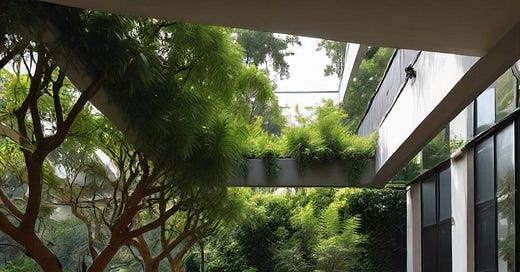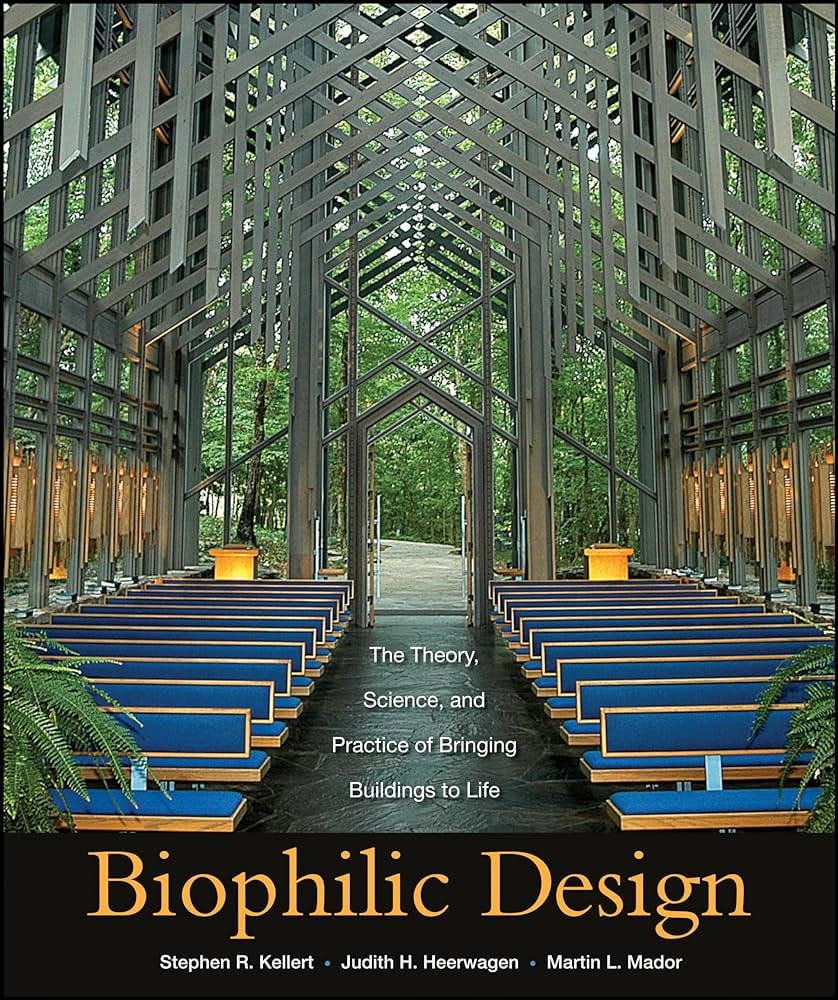Designing with Nature: The Essential Role of Biophilia in Modern Architecture
How Biophilia is Transforming Contemporary Design.
This Week’s Top Highlights: Understanding Biophilia
🍃 What Is Biophilic Design? The goal of biophilic design is to create a good habitat for people as biological organisms inhabiting modern structures. Read more.
🥬 The six elements of biophilic design: Designing buildings and landscapes that nurture the relationship between people and nature by introducing various natural features into the built environment. Read more.
💚 Everything you need to know about biophilic design: As Frank Lloyd Wright said: “Study nature, love nature, stay close to nature. It will never fail you. Read more.
Read Time: 4 Minutes
Urbanization and technology dominate our lives but the innate human desire to connect with nature, known as biophilia, has never been more crucial.
Biophilia, derived from the Greek words for "life" (bio) and "love" (philia), encapsulates the bond between humans and the natural world. This concept has profound implications for contemporary architectural practice.
The term "biophilia" in the context of architecture and design was popularized by the American biologist Edward O. Wilson in the 1980s. Wilson introduced the concept in his book "Biophilia" (1984), where he proposed that humans have an innate affinity for nature and natural processes.
Wilson argued that this connection to the natural world is essential for our well-being and has significant implications for various fields, including architecture.
Biophilia suggests that humans have a need to affiliate with nature. This connection enhances physical and mental well-being, fostering a sense of belonging and tranquility.
The concept was further developed and formalized in the 1990s and 2000s by architects and researchers such as Stephen Kellert, who collaborated with Wilson and expanded on the principles of biophilic design.
Kellert's work, including the influential book "Biophilic Design: The Theory, Science, and Practice of Bringing Buildings to Life" (2008), provided a comprehensive framework for applying biophilic principles in architecture. This framework includes strategies such as incorporating natural light, ventilation, vegetation, natural materials, and water features into buildings and urban spaces.
Implementation in Architecture
Architects and designers employ various strategies to incorporate biophilic principles into their projects. Here are some key methods:
Natural Light and Ventilation: Maximizing daylight and ensuring ample ventilation creates a dynamic and healthful indoor environment. Large windows, skylights, and open floor plans facilitate natural light penetration and airflow, reducing reliance on artificial lighting and mechanical ventilation.
Natural Materials and Textures: Utilizing materials such as wood, stone, and bamboo, along with natural textures, enhances tactile experiences and visual comfort. These materials not only bring warmth and organic beauty to spaces but also reduce the carbon footprint associated with construction.
Vegetation and Green Spaces: Incorporating plants, green walls, and rooftop gardens introduces greenery into urban settings. These elements improve air quality, reduce urban heat island effects, and provide aesthetic and psychological benefits.
Water Features: The presence of water, through fountains, ponds, or aquariums, adds a sensory dimension that calms and soothes occupants. The sound and sight of water can reduce stress and enhance the overall ambiance of a space.
Biomorphic Forms and Patterns: Integrating shapes, patterns, and structures inspired by nature fosters a sense of harmony and balance. Curvilinear forms, fractal patterns, and organic motifs resonate with our subconscious affinity for the natural world.
Benefits of Biophilic Design
The implementation of biophilic design principles offers numerous advantages, transforming spaces into havens of well-being and efficiency:
Enhanced Well-being: Interaction with natural elements has been shown to reduce stress, lower blood pressure, and improve mood. Occupants of biophilic spaces often experience increased happiness and overall life satisfaction.
Increased Productivity and Creativity: Access to natural light and views of nature boosts cognitive function and creativity. Workspaces designed with biophilic principles report higher productivity levels and job satisfaction.
Health Benefits: Improved air quality, access to natural light, and the presence of plants contribute to better physical health. These elements can reduce the incidence of respiratory issues, allergies, and sick building syndrome.
Sustainability: Biophilic design promotes sustainable practices by emphasizing the use of natural, renewable materials and energy-efficient systems. This approach aligns with global efforts to reduce the environmental impact of the built environment.
Community and Connectivity: Biophilic spaces foster a sense of community and enhance social interaction. Shared green spaces and communal areas encourage engagement and connectivity among occupants.
Biophilia is more than a design trend
It is a fundamental approach that addresses our deep-seated need for nature. By embracing biophilic design, architects can create environments that not only meet functional requirements but also enrich the human experience, fostering a healthier, more sustainable, and connected world. As we continue to build the cities of the future, let us remember to integrate the timeless wisdom of nature into our architectural endeavours.








